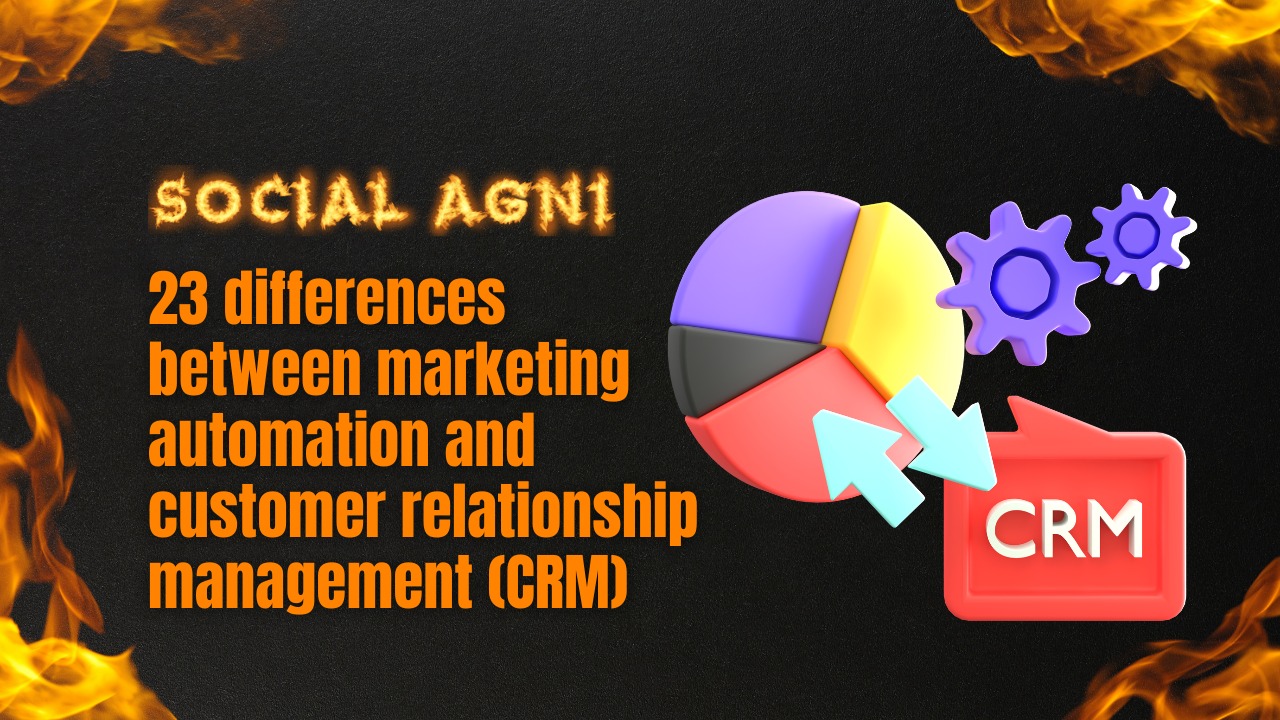Marketing Automation and Customer Relationship Management (CRM) are two essential components of modern business strategies, each serving distinct yet interconnected purposes in the realm of customer engagement and relationship management. As companies strive to enhance their marketing efforts and maintain strong customer connections, understanding the differences and synergies between marketing automation and CRM is crucial. Marketing Automation refers to the use of technology and software to automate repetitive marketing tasks and processes. It enables businesses to streamline marketing activities, nurture leads, and deliver personalized content at various stages of the customer journey. Marketing automation platforms allow marketers to automate email campaigns, social media postings, lead scoring, and customer segmentation. By automating these processes, companies can improve efficiency, save time, and deliver targeted messaging to their audience. On the other hand, Customer Relationship Management (CRM) is a comprehensive approach to managing interactions with customers throughout their lifecycle. A CRM system is designed to centralize customer data, including contact information, purchase history, communication records, and interactions across various touchpoints. This holistic view of customer interactions helps businesses understand their customers better and enables personalized engagement. CRM systems also assist sales teams in managing leads, tracking opportunities, and forecasting sales. While marketing automation and CRM have distinct purposes, they often work hand-in-hand to optimize customer interactions and increase overall efficiency. The integration of marketing automation with CRM systems ensures that marketing efforts align with sales and customer service activities, creating a seamless customer experience. By combining marketing automation and CRM, companies can track leads from initial contact through the sales pipeline, automate follow-ups, and deliver tailored content based on customer behavior and preferences. This synergy allows businesses to nurture prospects more effectively, convert leads into customers, and retain existing clients by delivering relevant and timely communications. In summary, marketing automation and customer relationship management are integral components of modern business strategies, empowering companies to engage with customers effectively and build lasting relationships. Marketing automation streamlines marketing processes, while CRM centralizes customer data and interactions. Together, these two tools optimize customer engagement, enhance sales efforts, and foster long-term loyalty in a competitive business landscape. S.no. Aspect Marketing Automation CRM 1 Focus Automating marketing activities Managing customer relationships 2 Purpose Streamlining marketing processes Enhancing customer interactions 3 Functionality Campaign management Customer data management 4 Communication Channels Email, social media, SMS, etc. Email, phone, in-person, etc. 5 Lead Management Lead nurturing and scoring Lead tracking and conversion 6 Workflow Automation Automated workflows and triggers Process automation and reminders 7 Personalization Tailoring content and messaging Customizing customer experiences 8 Lead Generation Automated lead capture and forms Lead tracking and qualification 9 Sales and Marketing Alignment Aligning marketing and sales teams Collaborating on customer data 10 Analytics and Reporting Campaign performance metrics Sales and customer analytics 11 ROI Measurement Tracking marketing campaign ROI Evaluating sales performance 12 Customer Segmentation Segmentation based on behavior Segmentation based on data 13 Multi-channel Campaigns Orchestrating campaigns across channels Managing customer touchpoints 14 Lead Scoring Assigning scores to leads Identifying high-value customers 15 Email Marketing Integration Automating email campaigns Email tracking and analytics 16 Customer Support Integration Limited support capabilities Comprehensive support features 17 Sales Pipeline Management Limited pipeline visibility Managing sales stages and deals 18 Customer Data Management Basic customer information Comprehensive customer profiles 19 Sales Forecasting Limited sales forecasting Analyzing sales trends and data 20 Cross-functional Collaboration Collaboration with marketing and sales teams Collaboration across departments 21 Customer Lifecycle Management Automated lifecycle campaigns Tracking customer interactions 22 Marketing Attribution Tracking campaign effectiveness Identifying customer touchpoints 23 Third-party Integrations Integrates with various marketing tools Integrates with various customer management tools Frequently Asked Questions (FAQs): References
